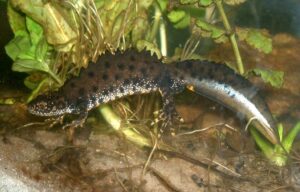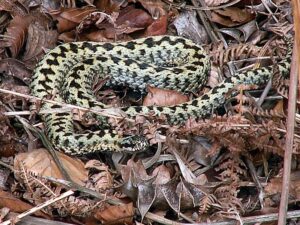Amphibian and Reptile Conservation
A presentation by Rachael Cooper Bohannon
Wednesday, 10th April, 7pm Elgin Town Hall
Rachael Cooper Bohannon is the Scotland Coordinator for ARC, working on Saving Scotland’s and Amphibians (SSAAR), and Species on the Edge, a project based in the Solway Firth area.
In her presentation, she introduced the SSAAR project, which has now been running for three years. The project has discovered that 49% of the Scottish population are in decline.
A range of different monitoring programmes have been introduced, including ways in which the public can report their own sightings of reptiles and amphibians, such as the Garden Dragon Watch and the Scottish Adder survey. ARC has an excellent website: arc-trust.org
Reptiles:
There are just three species of reptile in Scotland
- Adder, the only snake in Scotland and the only poisonous snake in the UK. the males have a zigzag black and white pattern on their bodies, the females have a brown/neutral colour. They can grow up to 70cms long (females)
- Slow worm, not a snake but a legless lizard
- Common or viviparous lizard – a variety of colours, brown, green blue
Amphibians:
There are more species of amphibians.
- Common frog – widespread
- Common toad- widespread
- Natterjack toad – rare and localised, mainly in the Solway Firth area
- Palmate newt – fairly widespread in Scotland
- Smooth newt – least common
- Great crested newt – considerably bigger than other newts (14cm); European protected species.
- Male adder (left) and great crested newt (right)


After showing a series of images of the different species, Rachael continued to give some advice on how to spot reptiles, which are extremely elusive.
- They like south facing basking places in undulating countryside
- Heathland, heathery bogland are popular spots
- Also log piles, railway lines, road verges, manure heaps and even brownfield sites.
- They can be encouraged to hide beneath roofing felt or pieces of corrugated metal
April is the best time to look for reptiles, as they are at their most active and in breeding condition. Look for them between 11am and 3pm spring, on a warm calm day.
